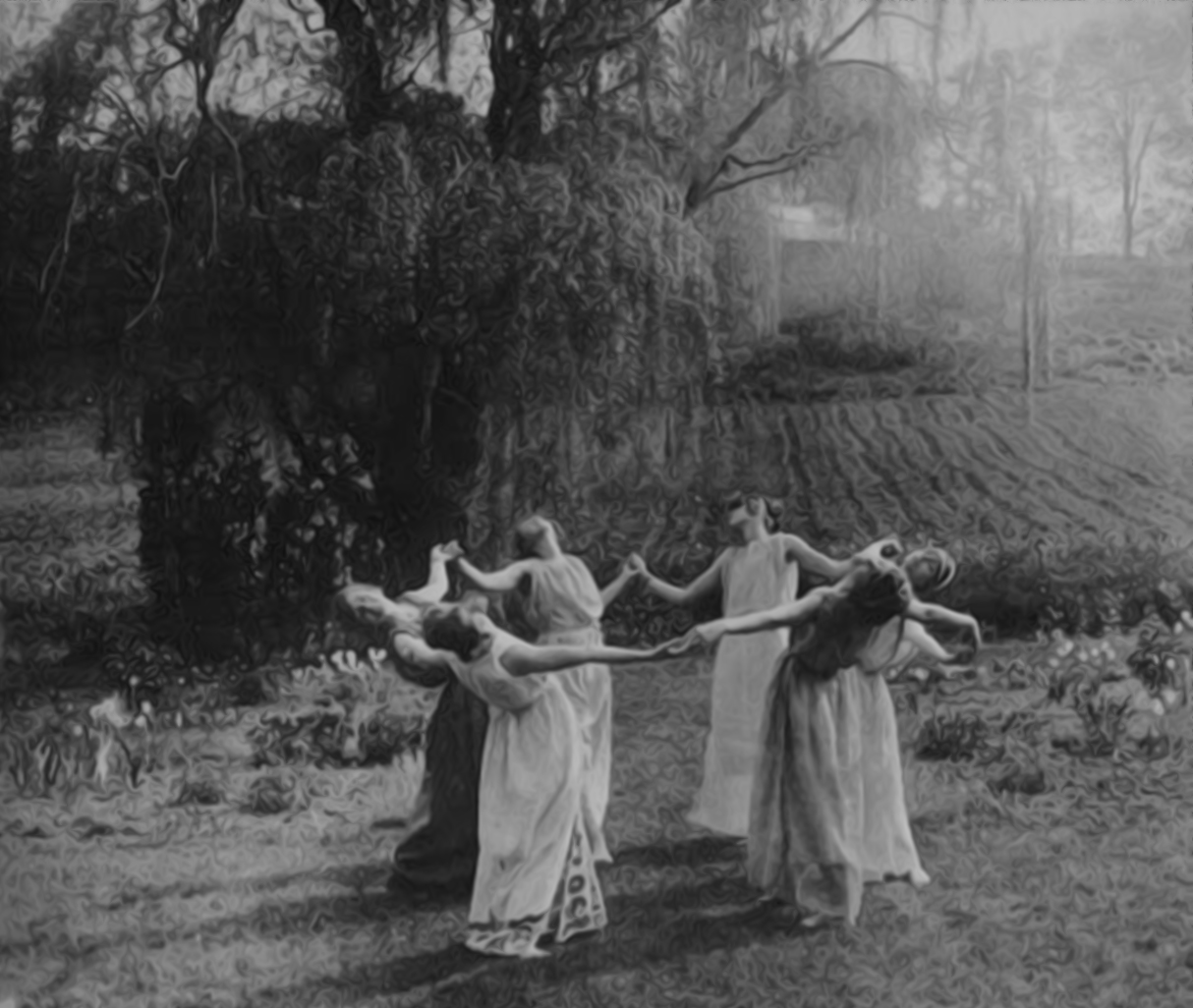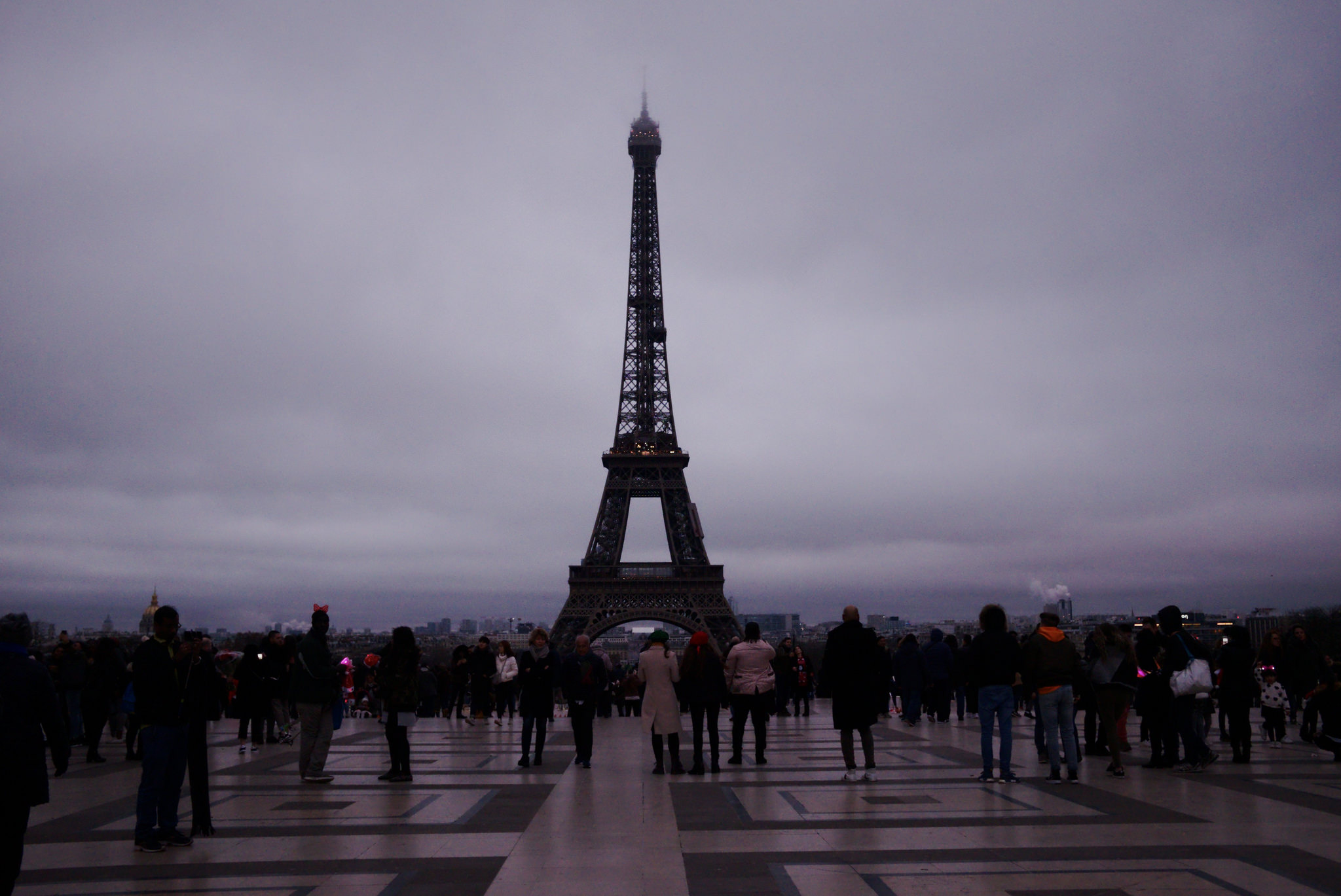
(…)
The current trend in witch infatuation marks an alliance foreclosed. In the early days of America, when accusations of witchcraft were leveled at Indians, Black people, and settlers who strayed from the strict disciplining needed to create a cohesive sovereignty of one dominant nation, it was because witches were a threat. The representations of witches that dominate contemporary American cultural consciousness—the “Surprise, Bitch” meme from American Horror Story, Stevie Nicks, people who talk about healing stones a lot—betray the role witches could have played in undoing the nation.
That is not to say the threat of witches to poison the patriarch has completely disappeared. In recent weeks some men have been quick to label the campaigns bringing forth sexual assault and harassment accusations as witch hunts, willfully ignorant that the term refers to a concerted campaign against women. The foolish use of the term has been noted and mocked by women, some of whom have also reappropriated the term to declare themselves the witches doing the hunting (which may very well be what the men were unconsciously getting at in the first place—the feeling of being hunted by witches).
Actual witch hunts of the past such as the Salem witch trials followed from a fear of Indian women and their role in forms of governance alternative to those of the foundling country. Along with genocidal tactics of sexual violence, early settlers also worked through their fear by projecting it elsewhere. The hypervisibility, and necessarily spectacular aspects, of witch trials against white women were an arena to handle physically and politically the threat of Indigenous societies where women were in power. Beyond the events at Salem—a historical spectacle as formative to America as the Thanksgiving myth—unruly women, be they Native, Black, or white, have continuously been posed as savage and placed outside the enclosed boundaries of civilization and nation. In a move toward symbolic enclosure, both witches and Indians have been reduced to accessorized signifiers hawked by Urban Outfitters and Forever 21, available for the carefree to adorn themselves with at Coachella and express their pagan predilections for living ever so briefly outside time.
The work of enclosure is key here: Cultural representations of witches reign in their savagery even as horror movies such as The Witch might give participants a chance to be fearful of it. Enclosure is also the means by which the nation turns Indigenous land into private property, which then must be defended against subjects construed to be savage. Along with witch, savage, and slut, the accusatory title of heathen is also hurled throughout colonial times at those who stand in the way of a cohesive nation. Derived from the word heath, which can mean uncultivated plain or wild forest, heathen in its first uses in Christian contexts meant someone who not only lacked proper religiosity but also inhabited land in a noncivilized manner. To cast aside the heathen through death, incarceration, or rehabilitation has gone hand in hand with clearing the land to be made into property. Heathen is no longer a category of persecution, but the ideology that there are savages—i.e. Indigenous and Black peoples—with no valid claim to land and life certainly persists.
These colonial logics that permit ongoing dispossession and death point to one of the failures of white witches: While they might hex Trump, they do not in any meaningful way extend their lifestyle to stand with those still marked by the history of the heathen. The etymology of heathen helps illuminate an argument put forth by Silvia Federici in her classic feminist text Caliban and the Witch, that the American witch hunts were not just terrorist strategies to silence dissent and demand obedience, but were also importantly a strategy of enclosure. Federici’s theorization of primitive accumulation locates the development of capitalism in three linked processes: The coerced reproductive work of European women, the persecution of Indigenous peoples, and the enslavement of Africans. While white witches once represented a threat to that reproductive order, they have since been sanitized and permitted, even if at the fringes, into civil society.
There are multiple simultaneous nostalgias at work with the current witch obsession. There’s the nostalgia not only for a romanticized premodern time when earth-based practices, like a life structured around seasonal ceremony, were more possible, but also for the ’90s and its earnest invocation of girl power. First uttered by the punk group Bikini Kill, “girl power”—as a phrase, attitude, and position—was brought to wild heights of popularity by the Spice Girls. It is not surprising that in this atmosphere of celebration a fascination with witches would arise. While modern-day witches may seem, at times, aligned with a feminist political critique of capitalist reproduction, the fundamental threat of savagery they could pose to the nation is downplayed in their mainstream and even cult-classic iterations, which tacitly support female empowerment while avoiding the crisis in femininity witches have summoned in their naked fire dances. Of the many witchy movies and TV shows of the ’90s, several have since become millennial classics. The Craft—released in 1996 and centered on a group of four occult-dabbling Catholic schoolgirls—remains the iconic standout of the genre for its ability to brand the female empowerment narrative in the definitive looks of a contemporary coven: black latex, black eyeliner, black chokers. Unfortunately, what begins as a goth feel-good tale of getting revenge on slut-shaming football jerks turns to a jealous girl-on-girl fallout. Released three years earlier than the goth-chic cult classic was the more family-oriented Hocus Pocus, set in Salem, which features Bette Midler playing a genuinely scary and villainous witch but one who is defeated in the end by a teenage boy. Indians are absent from these movies and the lore they invoke. And though there is some passing reference to the violence faced by heathen women of the past, these films are mostly centered on redemptive stories of love: love between friends and sisters, but always more importantly romantic love between men and women.
The paragon of pagan chick flicks Practical Magic, for instance, begins in Puritan times with the scene of a witch about to be hung. This witch is feared for her magic and resented for her homewrecking ways. Ancestor to sisters played by Sandra Bullock and Nicole Kidman, the witch puts “a curse on any man who dares love” any of her female descendents. What ensues is a lifelong quest for the sisters to find un-hexed heterosexual romance. At one point they pull off a spell to reanimate Nicole Kidman’s abusive boyfriend with a pentagram made from a can of reddi whip. And in the end, Sandra Bullock’s character overcomes both the persecution of witches as outsiders and the family curse by falling in true love with a cop, once the violent enforcer of order transformed into a benevolent, handsome man.
Herein lies one of the more sinister revisions at work in the ’90s movie about witches—the strange women who abandon civilized life to live naked with other women in the woods become straight. According to colonial logics, women accused of witchcraft and Indigenous and African-descendent peoples are fundamental threats to the nation state. Their unruly sexualities (and the non-Western societal structures they index) are capable of undoing the binding power of the nuclear family, otherwise known as the power of the father. But the depictions of witches in the ’90s worked hard to repair witches’ reproductive role in the home. Willow, the beloved lesbian witch of Buffy the Vampire Slayer, is the exception whose status as sapphic icon proves the rule.
(…)




